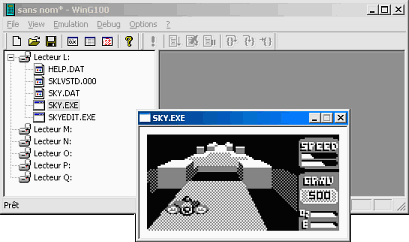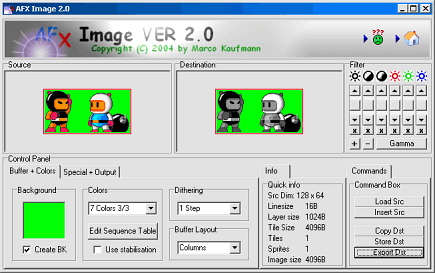When you want to write your own Add Ins, there are some things you absolutely should have. These are tools for installing/browsing Add Ins first of all, and compilers + moduls & libraries of course. What you urgently need is:
- [Casio Add In Installer and CALiPSO Add In Packager]
or
- FlashCom or
- Flash100
The best certainly is when you have all of them (note: it's a logical or). Recommended furthermore is that you install GComm and CW-Explorer to your calc.
Compilers & Libraries
There are various compilers and development environments out there that you could use to write Add Ins. This is because Casio Algebra FX series is a DOS compatible PC with a 80186 compatible CPU making - as I mentioned already - coding very easy. In fact the only term a compiler has to fulfill is that it's targeting on 16 Bit DOS platform.
However, first Add Ins have been written in Assembler and programmers started using C then. Today C is still the most common method of writing Add Ins, though other languages have established already. I for example use Pascal for all of my Add Ins (and I guess I was the first who did it though I'm not the only one anymore), and heard of others who tried even Fortran and Basic.
Recommended compilers and IDEs you should have are
Other suggested stuff
Besides that, there are some other very usefull ressources. The first thing I'd strongly advise you is Oliver Coupelon's Programming Guide (this and some other really good documentation you can get at Mohamed's Site).
I consider it to be the most important doc about AFX programming ever (basics, hardware + IO ports, Interrupts), in fact it teached me how to do and it was the only doc necessary to write my first Add Ins, my first libraries (AFXTP 1.0) and even my first game, SkyRoads. It contains nearly everything. When you want to take use of special NEC V30 instruction set, you should get the NEC V30 user manual furthermore (see also NEC V30 specific features)
What else is essential for every AFX coder, understood, is WinG100 emulator by Yves Morgan.
This eases program development for the AFX significant, as it's capable to run any* AFX program on your PC. Before I used this fine tool I was forced to have a PC version of each AFX module in order to test Add Ins without a calc (would be bothering to make a transmission for every test). Usage: right click any drive in order to add files, run any executable. You even can watch registers, memory and the COM port 
(* there are problems with color emulation though; such programs will run, too, but maybe you don't recognice much on WinG100 screen as it's flickering very heavy. For testing them however it still should be enough)
Most likely you'll need tiles and images for your games, thus you also should have tools in order to create them e.g. from Windows Bitmaps. Though it sounds like self-praise, I highly recommend AFX Image 2.0 here, supporting things like color emulation, animation sequences, fonts, MLC bitmaps, CFX pictures and lots more.
Finally, I suggest you to have dscoshpe's dRXE in order to convert executables into Datalight RXE format. This is very usefull as RXE executes within Flash/ROM directly instead of RAM, and on the one hand you can execute programs with more than 64KB code spread over several segments thus, on the other hand you have all RAM available for your data section.
Copyright (C) 2005 by Marco Kaufmann























